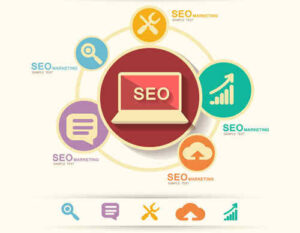Are you looking to create an online storefront for your business in 2023? Would you like to get good returns on your investment? Here’s everything you need to know about designing your eCommerce store;
First, you can use the services of an eCommerce development company. These services include eCommerce solutions such as web design, payment options integration, email marketing, and SMS marketing at most. However, going for these services without the help of an expert may leave you limited and may not guarantee success for your eCommerce platform.
This is why we have created time-proven design strategies to help make your eCommerce business a success.
See also: the five most dangerous eCommerce mistakes to avoid.
15 eCommerce strategies for guaranteed success
When planning your website design, here are strategies you can implement in your eCommerce website development process to help you achieve outstanding results;
1. Create visual ease for the user
One important strategy for guaranteed success on your eCommerce website is the use of a visual hierarchy. This hierarchy keeps your website decluttered while helping users find what they are looking for in minutes.
Begin by positioning essential components such as your brand logo and unique value proposition right at the opening of your home page. This will help your potential customers understand what your business does at a glance. Importantly, let your layout be strategic and obvious, so your new website visitor doesn’t waste all day figuring out what to do next. Using a strategic layout helps improve the user interface for your visitors.
Also, consider making your CTAs visible. CTAs make navigating through pages easy. Plus, with CTAs, users know they are moving to a new page or perhaps taking a new action like signing up to your newsletter, making a payment, or just performing a task.
2. Anticipate What Your Customer is Looking For
When designing your e-commerce website, always consider what your customers are looking for. The truth is, before potential customers land on your website, they already have a problem at hand which they believe our product will help them solve. So the question goes – is your online store positioned to provide these solutions.
To achieve this, ensure your value proposition directly tackles your customer’s pain points while providing them with solutions. This way your customers are confident they will find what they are looking for on your online store seamlessly.
3. Start selling from the landing page
In an eCommerce business, landing pages are usually used for promoting special offers. So unlike other pages of your website, it’s specifically for converting prospects into customers.
To get the most out of your landing page, display products alongside their prices right on your page. Preferably, your product images should have a direct link to a page with detailed product descriptions, and similar products belonging to the same category. Additionally, try creating landing pages with promotional codes displayed visibly, as this will help your users convert better and faster.
4. Consider using a sticky navigation
Sticky navigation is a pinned menu that remains constant while a user scrolls or explores within your website. It helps make your e-commerce website responsive and user-friendly. And this is exactly what users need.
Again, using sticky navigation on your eCommerce site means users can scroll down your entire website without having to scroll up all the time to find the navigation bar because the navbar is constantly on top of the page.
5. Add a search bar to every page
According to a report by AddSearch, over 30% of website visitors use a search bar when you provide one. And beyond that, 45% of conversions happen through site searches declares Bloomreach.
Obviously, from the stats above, the search bar is a useful tool to have on your eCommerce website. It improves the functionality of your site and helps your user find whatever they are looking for in no time.
Moreover, having the search feature on every page of your site means visitors can quickly find the exact product they are looking for just by uploading an image of the item or by typing in relevant keywords.
6. Add a content filtration feature
A content filtration feature on your eCommerce website helps users filter their searches to suit their specific needs. Using this feature, prospective customers can filter products based on product preferences such as color, brand, size, and even category. This way your product catalog doesn’t look overwhelming and your customers stay happy.
7. Nothing beats great content
Great content offers valuable and relevant information to the user. Most eCommerce websites lack this and it tells on their business. During your development process, ensure every content on your web page is engaging, relevant, valuable, and more importantly easy to read.
Not only does great content help conversion on eCommerce platforms, but also is a great optimization strategy for ranking in searches and driving online traffic.
Want an eCommerce web design that appeals to any kind of audience? Let our experts help you create a store that pulls in sales like a magnet.
8. Use high-quality professional images of your products
Visual elements help your potential customer have a feel of the product they intend to buy – an experience equivalent to in-person shopping. And beyond that, prospects find quality images convincing, satisfying and assuring of the product they want to buy.
Ideally, incorporating high-quality professional images of your products on your e-commerce website could be all you need to make a prospect convert. These images help prompt your prospect into making a buying decision sooner than they would have thought.
Furthermore, high-resolution visuals with good product descriptions can positively impact your search engine optimization. For example, an eCommerce website with quality images and corresponding alt text is likely to appear in search results, unlike a store without any.
9. Optimize the site for mobile devices
Generally, most online transactions are carried out using mobile phones. This is true going by a stat published by Criteo, which shows mobile users make up for more than half of purchases online.
When planning your eCommerce website design, consider optimizing your web pages for mobile devices. Additionally, having a custom software development professional create a mobile app for your online business will improve the user experience. Plus, when users are satisfied they make a purchase.
Finally, an eCommerce store fully optimized for mobile gadgets such as tablets, iPad, and other handheld devices will improve your SEO performance on search engines.
10. Group related products together
An excellent way to improve conversions on your eCommerce store is to group related products. For example, having fashion items such as sunshades, shoes, and handbags together can make users browse trendy items and spend money freely and easily. Moreover, it helps them shop from one place instead of getting products from different online stores.
11. The cart can also be the wishlist
Although, users might likely not complete their checkout especially if the process is difficult, however creating an easy checkout process can help them make a buying decision easily.
Also, When customers end up not completing a purchase, do not empty their cart. Ensure to make them drop their personal data ( preferably emails ) and keep sending them reminders to complete their shopping purchase.
12. Use a one-page checkout process if you can
To improve conversion on your store, consider using a one-page checkout approach as opposed to a multi-step process. A single-page checkout allows online shoppers to complete their purchasing process on one piece of the form instead of going through different pages ( multi-step checkout approach). The benefit of this is that customers can complete their online shopping on the checkout page quickly and seamlessly.
Also offer several payment options within the same website, including some of the most popular ones like credit/debit card, Apple Pay, Google Pay, PayPal, and many more.
13. Take advantage of social proof
Generally, eCommerce sites with social proofs are likely to perform better than their counterparts. From time to time, let customers who have previously bought from drop reviews and testimonials about their experience. This will help other users interested in your products make a buying decision quickly and without much convincing.
You might also want to see the benefits of multi-channel automation for B2C businesses.
14. Consistency in branding is a must
Although most online entrepreneurs pay little attention to their branding, still branding is important in eCommerce. Consistent branding helps your business to stand out from other brands while helping users recognize your store easily.
To maintain consistency in branding, it is recommended you use a unique business name, logo, and same font throughout your eCommerce website. Also, pay attention to your website’s color scheme, ensuring it doesn’t differ from your brand color.
15. Add an FAQ Page
When building your eCommerce project, having a faq page is of utmost importance. A frequently asked question page lets your visitor find the answers they are looking for. And beyond providing answers, it’s also a great way to tackle objections your prospects might have about your products.
Conclusion
Knowing fully well that starting from scratch to create an online store might be difficult, especially if you do not have experience in e-commerce website development. plus, no business owner wants a poor website design or an e-commerce site with poor performance – we recommend you implement strategies, up-to-standard strategies mentioned in this article into your eCommerce development.
Strategies such as high load speed, seamless navigation, mobile apps, search bar, and other excellent features should be incorporated into your e-commerce website development, regardless of whether you use a web development agency or not. Ultimately, they help you achieve a responsive design as well as score an overall success in your business.
Need help creating your eCommerce store or you just want to improve what you already built to boost sales? Contact Milia Marketing right now and let us show you what you have been missing.











